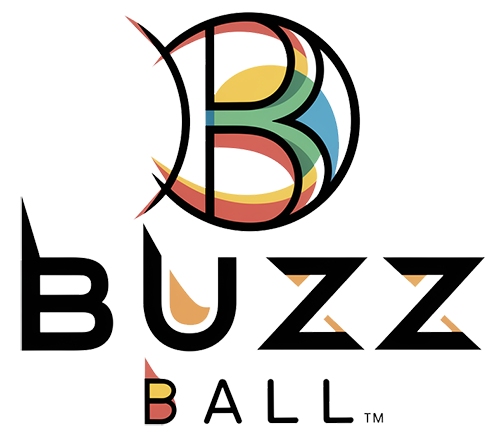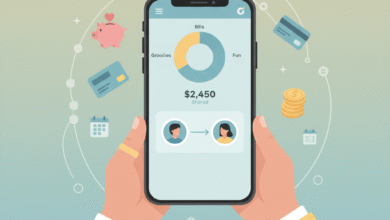
Core Finance: My Journey to Finally Understanding Money
You ever have one of those moments when your credit card statement hits your inbox, and you just stare at it like it’s written in another language?
Yeah. That used to be me.
Money always felt like some mysterious force that adults magically understood — until I realized those “adults” were also winging it most of the time. It wasn’t about being a math genius or working on Wall Street. It was about learning core finance — the stuff nobody really teaches us properly, yet we desperately need to survive (and thrive) in this modern world.
So, grab a cup of coffee, sit back, and let me tell you what I’ve learned about core finance — the foundation of personal and professional money management that can literally change how you see your life.
What Even Is Core Finance?
I used to think “finance” meant stock markets, complicated spreadsheets, or men in suits yelling “buy” and “sell.” But the truth?
Core finance is about the basics — the building blocks that keep your financial life together.
It’s how you earn, save, spend, borrow, and invest. It’s not just about making more money, it’s about managing what you have wisely.
Think of it like learning how to drive before jumping into a sports car. You don’t need to know how to drift — you just need to stay on the road.
In the corporate world, “core finance” usually refers to the backbone of a business — accounting, budgeting, capital structure, investments, and risk management.
But for everyday people like you and me, it’s the same concept, just on a smaller, more personal scale.
The Awakening: When My Bank Account Spoke the Truth
Here’s where it got real for me.
I remember checking my account one morning — I had just been paid, and within two weeks, it was almost empty. I wasn’t doing anything “crazy,” but small things added up: late-night Amazon orders, food delivery, subscriptions I didn’t even use anymore.
That’s when I realized I didn’t have a money problem; I had a management problem.
Core finance starts with awareness — understanding where your money goes. I began tracking every expense for a month, and let me tell you, it was a reality check. Seeing $300 worth of “little things” felt like getting hit with a financial brick.
Step One: Budgeting Like a Real Adult
Budgeting sounds boring, but it’s the financial version of GPS.
Without it, you’re just driving blind.
I started with the 50/30/20 rule — 50% needs, 30% wants, 20% savings. Simple enough to follow and flexible enough not to feel restrictive.
But here’s the part no one tells you: your first budget will fail.
You’ll underestimate groceries, forget about random expenses, or go overboard on weekends. It’s normal. The goal isn’t perfection — it’s control.
Once I got used to budgeting, something amazing happened: my anxiety about money started to fade.
I wasn’t scared to check my balance anymore because I knew what was going on. That’s the power of core finance — knowledge replacing fear.
Step Two: Building an Emergency Fund
Life loves surprises — flat tires, doctor visits, job layoffs.
Without savings, one bad week can spiral into a mountain of debt.
Core finance 101: have an emergency fund. Experts say three to six months of expenses, but honestly, even $1,000 can be a lifesaver when something goes wrong.
When I first started, I put aside $10–$20 a week in a separate account I couldn’t easily access. It grew slowly, but the peace of mind was instant. Knowing you have a safety net feels empowering — like walking a tightrope with a net below.
Step Three: Understanding Debt (and Making It Work for You)
Debt used to terrify me. I thought all debt was bad.
But there’s a difference between good debt (like a mortgage or student loan) and bad debt (high-interest credit cards, impulse purchases).
Core finance teaches you that debt isn’t the enemy — mismanaged debt is.
I started snowballing my payments: tackling the smallest balance first, then rolling that payment into the next. Watching debts disappear one by one was addictive.
Before I knew it, I was free from the pressure that had been sitting on my chest for years.
Step Four: Investing Without Freaking Out
I used to think investing was only for rich people — or people who said things like “diversify your portfolio” at dinner parties.
Then I discovered apps like Robinhood and Fidelity, and suddenly, it felt accessible.
But here’s the truth: investing isn’t about playing the market. It’s about patience.
Core finance means understanding the basics of compound growth, risk tolerance, and diversification.
I started small — literally $50 a month into an index fund. It wasn’t much, but it was something.
Watching it grow slowly taught me that wealth isn’t built overnight. It’s built one small, consistent choice at a time.
Step Five: The Magic of Financial Goals
Ever notice how money disappears faster when you don’t have a plan for it?
That’s why goals matter.
Whether it’s saving for a trip, buying a house, or retiring early, core finance helps you give every dollar a purpose.
I made a simple list:
-
Pay off my credit cards.
-
Build an emergency fund.
-
Invest $100 a month.
-
Save for a car upgrade.
Seeing those goals written down gave me focus — like a personal roadmap for my financial life. And checking them off one by one? Unreal feeling.
Step Six: Credit Scores and the Hidden Rules
Let’s be honest — credit scores sound like some mysterious grade we never asked for. But in America, it determines almost everything: car loans, apartments, even job offers.
Core finance helped me finally get it.
Pay bills on time.
Keep credit usage under 30%.
Don’t open too many accounts too quickly.
Simple habits, huge impact.
I went from a 610 to a 750 in less than a year, and it felt like leveling up in the game of life.
Step Seven: Retirement — Future You Will Thank You
When you’re in your 20s or 30s, retirement feels so far away.
But compound interest doesn’t wait.
Core finance is about long-term thinking — not just surviving today, but securing tomorrow.
Whether it’s a 401(k) from work, a Roth IRA, or a brokerage account, the key is starting now.
I started contributing just 5% to my 401(k). My employer matched it, and boom — free money! Watching that balance grow each month is like planting seeds for future freedom.
Real Talk: Emotions and Money
Here’s something textbooks never tell you: money is emotional.
It’s tied to our sense of safety, identity, and self-worth.
I’ve cried over overdraft fees. I’ve felt shame asking friends to split a check.
But I’ve also felt immense pride the first time I said, “Yeah, I can cover it,” without stressing.
Core finance isn’t just spreadsheets and numbers. It’s healing your relationship with money — learning that financial discipline isn’t punishment; it’s self-respect.
H2: Why Core Finance Matters More Than Ever
We live in a world where one bad decision can follow you for years.
Student loans, credit card debt, inflation — it’s rough out there.
But that’s exactly why learning core finance is powerful.
It gives you control in a system designed to confuse you.
It’s not about becoming rich; it’s about becoming secure.
When you understand how money moves, you stop feeling like life is happening to you — and start feeling like you’re in charge of it.
H2: How to Keep Learning Without Overwhelm
The best thing about finance today? You don’t need an MBA.
Podcasts, YouTube, Reddit forums — everything’s out there.
Start with:
-
“The Financial Diet” (YouTube channel — super relatable)
-
“I Will Teach You to Be Rich” by Ramit Sethi
-
“Your Money or Your Life” by Vicki Robin
And honestly? The most powerful teacher is experience.
The moment you start applying what you learn — even in tiny ways — it sticks.
FAQs About Core Finance
1. What does “core finance” mean in simple terms?
Core finance refers to the essential financial principles everyone should understand — like budgeting, saving, debt management, investing, and credit. It’s about building a stable financial foundation for personal or business life.
2. Do I need a finance degree to manage my money well?
Not at all. You just need curiosity and consistency. Modern tools like budgeting apps and online courses make financial literacy accessible to everyone.
3. How much should I save every month?
Start small. Even 10% of your income is a solid start. What matters is developing the habit of saving, not the amount itself.
4. Is investing risky for beginners?
Every investment carries risk, but understanding what you’re investing in reduces fear. Stick with low-cost index funds or ETFs when starting out — they’re simple and less volatile.
Final Thoughts: My Core Finance Confession
If I could go back and tell my younger self one thing, it’d be this:
You don’t have to be rich to take control — you just have to start.
Core finance isn’t about being perfect. It’s about progress.
It’s learning how to make your money work for you, not against you.
And maybe most importantly — it’s realizing you’re not behind. Everyone’s figuring it out, one paycheck, one mistake, one breakthrough at a time.
So next time you look at your bank balance, don’t flinch. Smile a little. Because if you’re reading this, you’ve already taken the first step toward mastering your financial story — and trust me, future you will be so proud.




